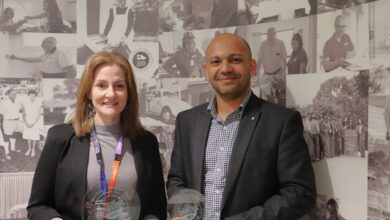New thermal imaging technique may help provide better wound care

New research by RMIT and Bolton Clarke has found a way of predicting whether a wound needs extra management, offering an early alert system for the most chronic wounds.
Published in the Nature journal Scientific Reports, the study shows that analysis of thermal images of venous leg ulcers (VLUs) can predict whether a wound needs extra attention as early as week two for people receiving care at home.
The researchers found that by using this technique they can accurately predict whether VLUs would heal in 12 weeks by the second week after baseline assessment.
“A non-contact method like thermal imaging would be ideal to use when managing wounds in the home setting to minimise physical contact and therefore reduce infection risk,” said Bolton Clarke Research Institute Senior Research Fellow Dr Rajna Ogrin.
“The significance of this work is that there is now a method for detecting wounds that do not heal in the normal trajectory by week two using a non-contact, quick, objective and simple method,” Ogrin said.
RMIT Professor Dinesh Kumar said regular wound photography could not easily be used for accurate measurement of changes in wound size in the home care environment.
“This is because there are large variations between images due to changes in the lighting conditions, image quality and differences in camera angle across specific points in time,” said Kumar.
“Textural analysis of thermal images is resilient to these variations and is a time-efficient and cost-effective method to identify delayed healing of VLUs and improve patient outcomes.”
More than 420,000 people have a wound at any given time in Australia, and the cost of wound care to the government runs over $3bn annually.
The average out of pocket expense to patients can be about $4,000 a year.
Email: [email protected]




